by Annie Lindsay
On the morning of July 11, 2001, Powdermill’s bird banding crew knew that was the day they’d catch the program’s 500,000th banding record (which includes new birds and recaptured birds). With only 10 birds to go, each person on the field crew guessed what species #500,000 would be, then set out on a net round together. As we checked each net, our eager anticipation grew with each bird we extracted. It turned out that I, a young, green banding intern, guessed correctly: number 500,000 was a Gray Catbird, a very common species at Powdermill during the breeding season, and a charismatically sassy species that endears itself to many banders and birders.
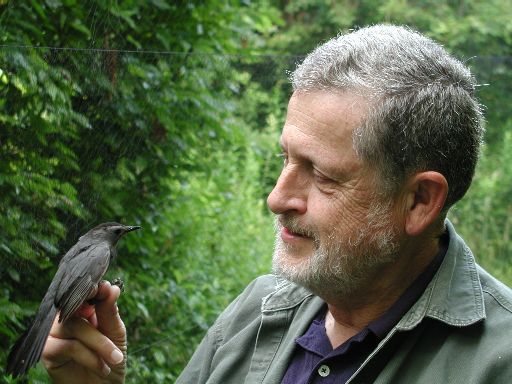
We released #500,000, celebrated with sparkling grape juice, then continued the banding day with a demonstration for children attending Powdermill’s summer camp. The catbird was made famous in the local newspaper, and because we’d each wagered a dollar on our guesses, I earned a $5 bill with the catbird’s band number on it for correctly guessing the species. That year marked the 40th anniversary of Powdermill’s banding program, and another milestone about two months prior: the 400,000th new bird banded.
Over the next two decades, the number of birds banded continued to creep up. Before spring migration this year, we determined that we needed just over 5,000 birds to reach 800,000 banding records. The countdown was on, and by mid-summer we knew that we could expect to reach that number by early- to mid-August, perfect timing to celebrate the banding program’s 60th anniversary.
The morning of August 6 was the day! With 45 birds to go after banding on August 5, we knew 800,000 was within sight. We opened the nets at 5:50 a.m., but the first two net checks yielded surprisingly fewer birds than we expected. At the 7:50 a.m. net check, we still had 20 birds to go, and given the pace of the morning we assumed The Bird wouldn’t be caught until the following round, so the banding crew set out in different directions to clear the nets. About five minutes later our long-term volunteer and colleague, Nick, radioed back to say that he had 11 birds in the second set of nets he was checking! The nets in the other directions had only a few birds, so we all converged on Nick’s location, and the final countdown began with five birds to go.
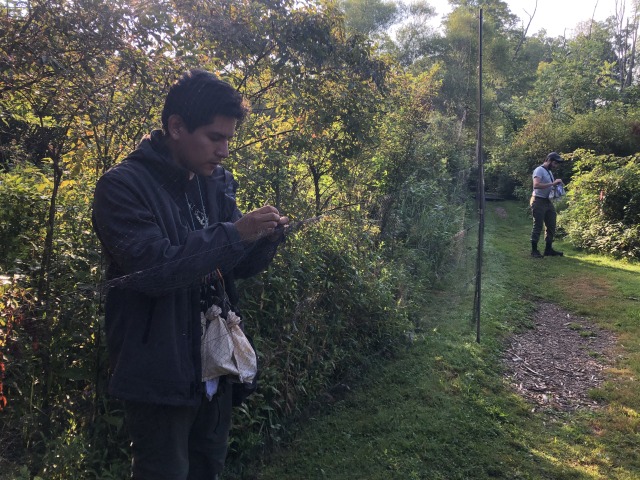
The next three sets of nets were empty, but Long Lane, a series of nine nets connected in a long line, delivered a Black-and-White Warbler, a Black-throated Green Warbler, a Gray Catbird, and a Canada Warbler. With number 800,000 just ahead, Mallory, PARC’s Motus and banding assistant, called back to the rest of us, “It’s here!” Our milestone bird was a young Cedar Waxwing, a species that is quite common at Powdermill during the migration and breeding seasons, and often is spotted in nomadic flocks during the winter.
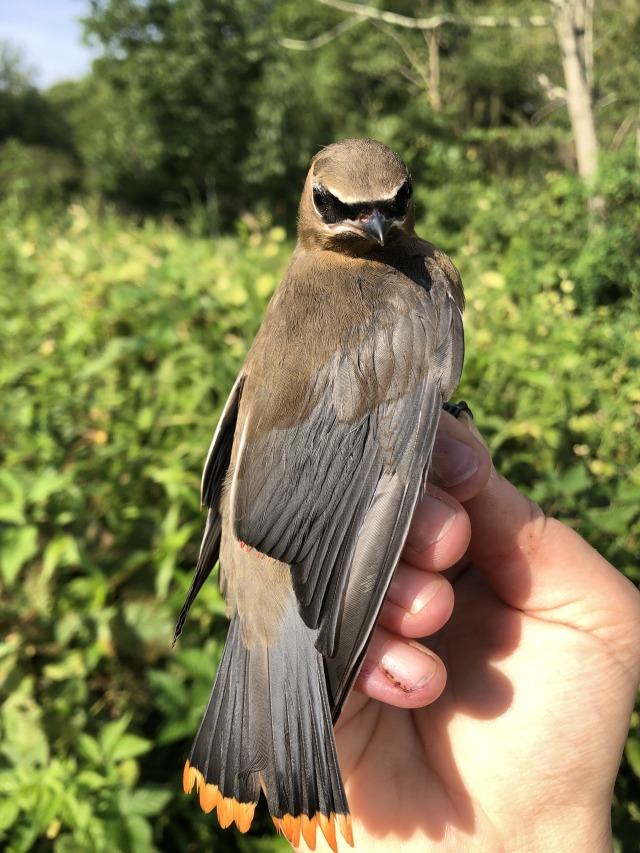
Just beyond the waxwing was another Gray Catbird, which concluded the net round. We all made our way back to the lab where we banded the celebrity waxwing, recorded the usual data (age, sex, measurements, and mass), snapped a few photos and a quick video, and then released the bird.
Based on the waxwing’s plumage, we know that it hatched this summer, and it displayed an interesting plumage characteristic that is relatively common in young waxwings in southwest Pennsylvania. Cedar Waxwings have a yellow terminal band on their tails, but if an individual eats invasive honeysuckle berries while feathers are growing, the pigment from the berries, called rhodoxanthin, is incorporated into the yellow parts of the growing feathers. Honeysuckle berries are plentiful at Powdermill, and are ripe when young Cedar Waxwings are still in the nest and growing their first set of feathers. If they’re fed these berries, their tails have an orange tail band instead of the normal yellow! Adult waxwings molt when the berries are no longer ripe, so their tails have a yellow stripe. This phenomenon is a great example of how introduced plants can affect their environment.
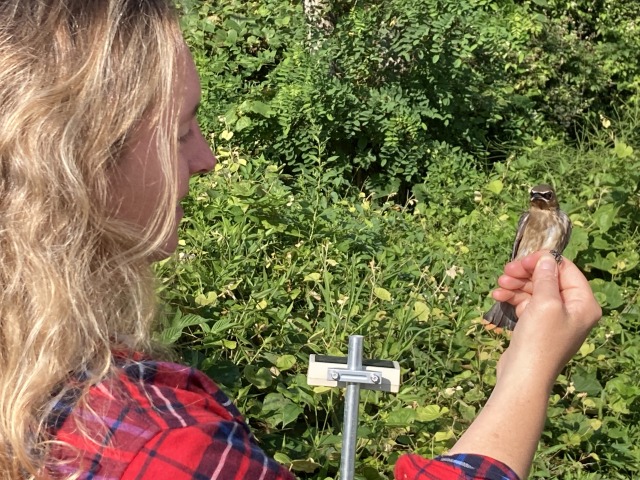
In keeping with previous milestones at Powdermill, #800,000 is a common species: Cedar Waxwing is the sixth most banded species at Powdermill, with over 24,000 of them banded in our 60-year history. We often like to attach meaning to notable events, and Cedar Waxwings lend themselves to this one in particular: the aberration in tail stripe pigmentation was described by Powdermill banders in a paper published in 1992, and the species was a favorite of the founder of Powdermill’s bird banding program, Bob Leberman.
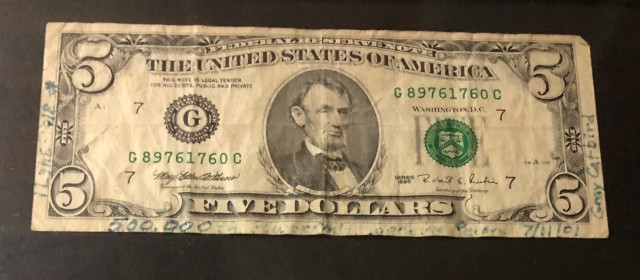
I still have the $5 bill with #500,000’s band number on it, and feel honored to have been part of both milestones at Powdermill. The crew didn’t place bets on what species #800,000 might be, but several had guesses, and I was sure it would be another catbird. Cedar Waxwing was an excellent surprise, and we’re all looking forward to #900,000 and #1,000,000 in the coming years!
Annie Lindsay is the Bird Banding Program Manager at Carnegie Museum of Natural History’s Powdermill Nature Reserve. Museum employees are encouraged to blog about their unique experiences and knowledge gained from working at the museum.
Related Content
Cedar Waxwing: Banding Record 800,000
Behind the Scenes…A Life in the Details
Carnegie Museum of Natural History Blog Citation Information
Blog author: Lindsay, AnniePublication date: September 10, 2021
